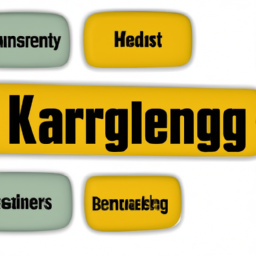An Introduction to Understanding Keyword Difficulty Ranges
Table of Contents []
Keyword Difficulty Range
Enlightening Prelude
When it comes to web visibility, leveraging effective keyword targeting can open pathways for your content to reach a much broader audience. To optimize for more traffic, it is essential not to overlook the difficulty factor that accompanies each keyword. Expeditiously optimizing websites based on concrete keyword difficulty analysis can take the guesswork out of search engine optimization. In this article, we will provide a quick overview of keyword difficulty' and illuminate key points to help you determine which keywords are most suitable for your SEO strategy.
Primary Exposition
1. What is Keyword Difficulty? - Keyword difficulty is a metric that assigns an integer value to each keyword that indicates its level of difficulty' relative to other phrases in the same niche.
2. Mapping Out Competition - To determine the difficulty level, SEO algorithms measure the competitiveness of the keywords by assessing the strength of rival sites that rank for this phrase. Diving deeper, this means taking into account how strong an organic structure, how powerful the inbound link profile, and how authoritative the competing websites are.
3. Range of Weightings - Keywords difficulty can range from 0 to 100, with 0 being the simplest phrase in the niche and 100 being almost impossible to rank for.
4. Striking an Appropriate Balance - An optimum SEO strategy would find a balance between low/medium difficulty and difficult/hard difficulty keywords. This suggests being mindful of the low-competition phrases that may offer a tight grip on rankings for both an SEO objective and upcoming trend, as well as being aware that higher difficulty keywords can also present an interactive long-term approach.
5. Weighting & Categorizing - After conducting an in-depth keyword difficulty analysis, use your findings to categorize each keyword into easy, medium, difficult or hard buckets.
6. Quality Assurance - Take into consideration the quality associated with each keyword, assessing whether phrases have long-term potential and can offer a viable return of investment.
7. Factor Reaslistically Be realistic about the budget and other resources required to rank for each keyword and assess the best ratio of hard-to-easy difficulty phrases.
8. Utilize Data Track your progress and leverage existing data such as organic search volume per month, competition density, or impressions per keyword to arrive at an empowered decision.
Brief Recap
Optimizing a website for maximum visibility and increased organic traffic requires keyword targeting strategies that take into account the difficulty' factor of each keyword. Keyword difficulty is a metric assigned to each word that provides insight into its competitiveness and associated level of difficulty relative to phrases from the same niche. To realize a mutually beneficial SEO trajectory, satellite an appropriate mix of low/medium difficulty and difficult/hard difficulty keywords and keep an eye on the quality associated with each phrase. Leverage data and evidence-backed insights to take the guesswork out of the equation and expeditiously set your platforms for success!
